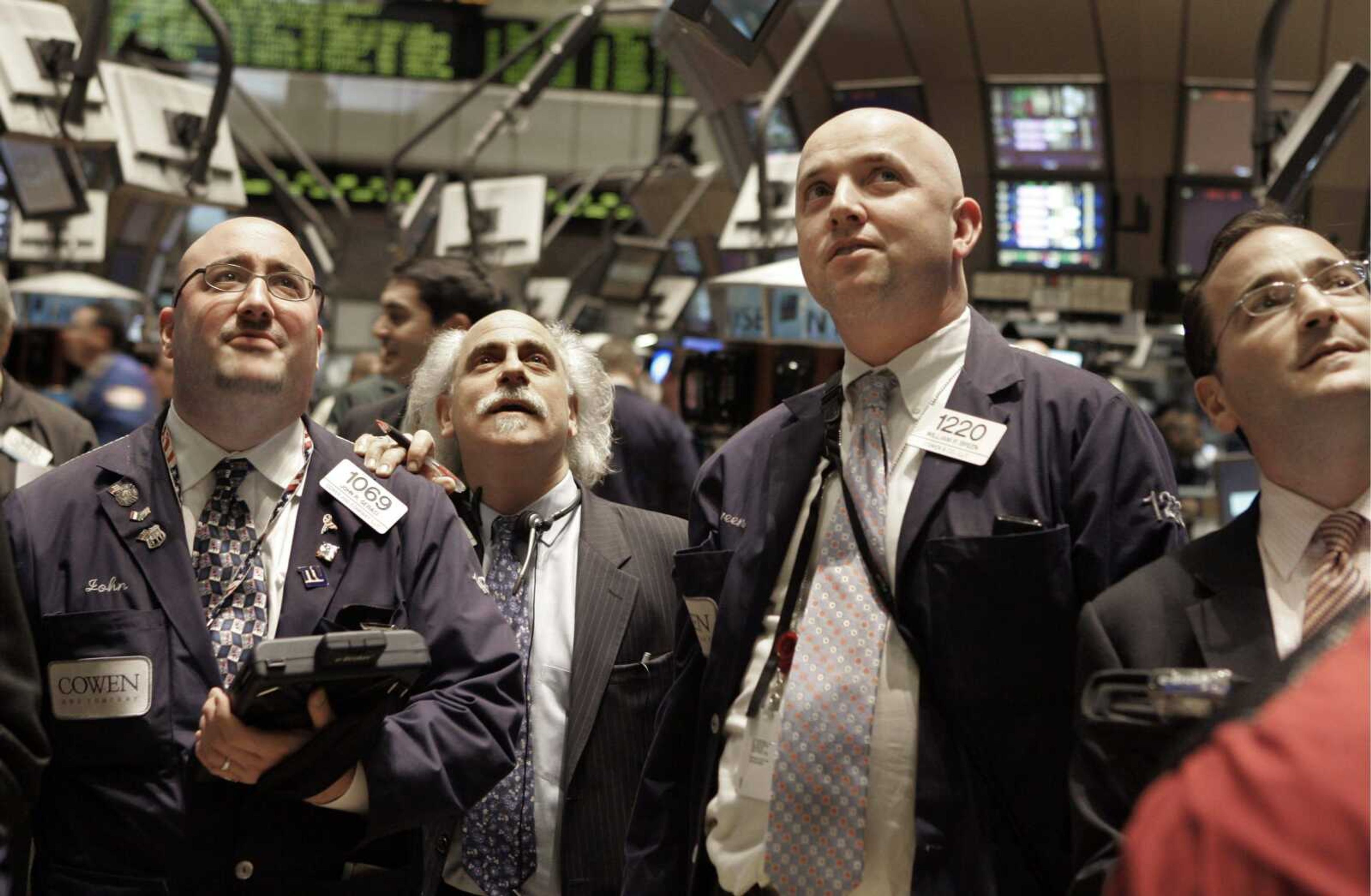Bankers in Southeast Missouri don't expect a rush of depositors looking for better yields as a result of another cut in interest rates, and they don't expect a rush of applicants for new loans, either.
The Federal Reserve dropped its most important interest rate to a nearly two-year low Tuesday and left the door open to additional cuts to prevent a housing and credit meltdown from pushing the economy into a recession. The cut, however, disappointed Wall Street and the key Dow Jones Industrial Index plunged 294 points, or 2.1 percent, on the news.
Fed chairman Ben Bernanke and all but one of his colleagues agreed to trim the federal funds rate by one-quarter percentage point to 4.25 percent. The federal funds rate is the benchmark rate for overnight loans between banks.
The rate reduction, the third this year, was needed to energize national economic growth, Fed officials explained. The deepening housing slump is affecting the behavior of consumers and businesses alike, they said.
"Economic growth is slowing, reflecting the intensification of the housing correction and some softening in business and consumer spending. Moreover, strains in financial markets have increased in recent weeks," the Fed said in a statement explaining its decision to cut rates again. The three rate cuts ordered thus far "should help promote moderate growth over time," the Fed added.
Taken as a single step, the interest rate cut will have limited effect in Southeast Missouri, said Richard Allgood, vice president of Security Bank & Trust Co. in Cape Girardeau. While the best-risk business borrowers will see some reduction in their loan rates, he said, the overall impact will be muted.
"There is not a direct correlation between the Fed's short-term interest rate moves and what happens in the housing market, for example," Allgood said. "It is basically a psychological move, a morale boost."
The real impact, Allgood said, occurs when interest rate cuts accumulate. Since Sept. 1, the Fed has cut the rate by a full percentage point. Some experts have predicted that further cuts are likely after Jan. 1.
Lower rates make financing business projects less expensive, said John R. Abercrombie, president of Capaha Bank, but the question is whether businesses feel confident enough to take on new debt.
"If the general attitude of the economy is a little bit of caution, there won't be as many projects that seek financing," he said.
The other impact is on savers, Abercrombie noted. Rates on certificates of deposit have dropped about one-half percent in the past few months. That's not enough to cause depositors to move their money, however, especially when the stock market shows uncertainty.
"With the market in a little bit of turmoil, they are going to stay where they are," he said.
The funds rate affects many other interest rates charged to individuals and businesses and is the Fed's most potent tool for influencing economic activity.
In response, commercial banks, including Wachovia and Wells Fargo, lowered their prime lending rate by a corresponding amount, to 7.25 percent. The prime rate applies to certain credit cards, home equity lines of credit and other loans.
The rationale behind the lower rates is that they will induce consumers and businesses to boost spending, invigorating economic activity. With Tuesday's reductions, both the funds rate and the prime rate are now at their lowest levels in nearly two years.
The fact that the Fed's key rate was lowered again marked an about-face for the central bank. At its previous meeting in October, Fed officials hinted that their two rate cuts probably would be sufficient to help the economy survive the housing and credit stresses. Since then, however, financial conditions have deteriorated, prompting Bernanke to signal before Tuesday's meeting that another rate cut may be needed after all as an insurance policy against undue economic weakness.
Along with Fed rates and the prime rate, federal bond yields fell Tuesday, said Moe Sandfort, community banking president of the Bank of Missouri. That could be a relief for homeowners with adjustable rate mortgages that will reset in the next 90 to 120 days because mortgage rates are generally tied to federal bond yields, he said.
If rate cuts continue, however, Sandfort said, holders of short-term CDs will be hurt.
"The bad thing about the discussion is that it makes people anticipate there is going to be something more coming," Sandfort said. "That makes for a very volatile situation."
As another bolstering move, the Fed on Tuesday also lowered its lending rates to banks by one-quarter percentage point to 4.75 percent. That was the fourth cut to the discount rate since mid-August.
"Recent developments, including the deterioration in financial market conditions, have increased the uncertainty surrounding the outlook for economic growth and inflation," the Fed said in its statement.
Banks, financial companies and other investors who made loans to people with spotty credit or put money into securities backed by those subprime mortgages have lost billions of dollars. Investors in the U.S. and abroad have grown more wary of buying new debt, thereby aggravating the credit crunch.
Staff writer Rudi Keller contributed to this report.
Connect with the Southeast Missourian Newsroom:
For corrections to this story or other insights for the editor, click here. To submit a letter to the editor, click here. To learn about the Southeast Missourian’s AI Policy, click here.







